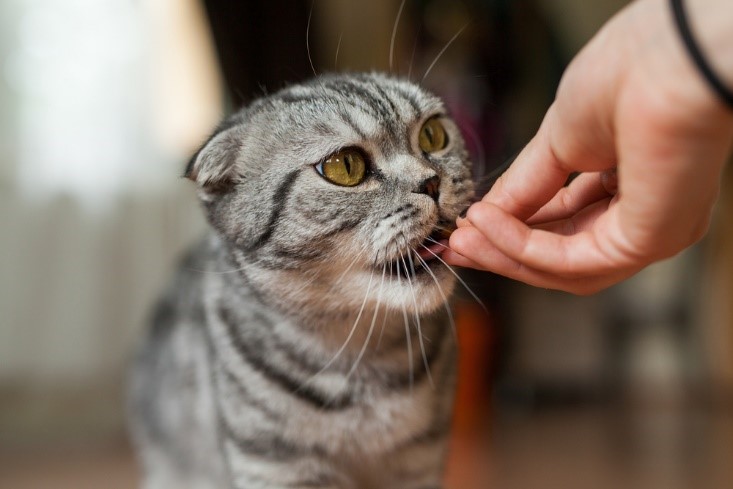Everyone loves their pet, but what many people don’t realize is that having a pet can be expensive. According to the American Pet Products Association, $136.8 billion were spent on veterinary care in 2022 – and with more sophisticated treatments available than ever before, those costs are only going up.
For this reason, it’s important for all responsible pet owners to understand which features make up a quality pet insurance plan.
In this article we’ll discuss how to differentiate between various plans and what factors you should consider when choosing one. We’ll explore why shopping around is essential and outline some of the most common coverage types so you know exactly what kind of protection your furry friends need.
Finally, we will provide tips for finding an affordable policy without sacrificing coverage or customer service satisfaction.
1. Types Of Coverage
When choosing a pet insurance plan, it’s important to consider the type of coverage that is available. Most plans offer several different types of protection for your pet, such as accident and illness coverage or routine care coverage.
Accident and illness coverage typically covers any medical expenses related to treating illnesses or injuries caused by accidents. Routine care coverage can cover preventive treatments like vaccinations, flea prevention, and dental cleanings.
A good policy should also provide reimbursement options so you can be reimbursed for eligible charges after submitting an itemized claim form.
Be sure to read through the fine print of the policy in order to understand what is covered and what isn’t before signing up for a plan. In addition, make sure there are no annual deductibles or caps on how much will be paid out in claims each year.
It’s also helpful to look for policies that include additional benefits such as emergency care at 24-hour veterinary clinics or travel assistance if you take your pet with you when travelling abroad.
Knowing exactly what kind of protection your plan offers helps ensure that you’re getting the best value from your policy.
2. What Is Covered And Not Covered
Considering coverage is key when comparing pet insurance plans. Careful contemplation can provide pawsome peace of mind. It’s worth looking into what exactly each plan offers and details about the scope of coverage.
When exploring Utah pet insurance, it pays to ponder what is covered and not covered in the plan. Generally speaking, a good pet insurance provider will cover accidents, illnesses, hospital visits, surgeries and medications that are necessary for your pup or kitty’s health.
Some policies may also include preventive care such as vaccinations and routine exams at no additional cost; however this benefit varies from company to company so be sure to compare the options closely.
At the same time, there are likely exclusions in any given policy that you should know before signing up – such as pre-existing conditions or breed-specific issues like hip dysplasia.
Make sure you read over all terms carefully so you understand what types of treatments would be excluded from your pet’s plan. Knowing these details upfront can help ensure that you choose a policy best suited for both you and your beloved animal companion.
3. Determining Your Pet’s Age
When it comes to pet insurance, understanding your pet’s age is an important part of the process. Age is one of the main factors used when determining premiums and coverage.
For instance, if you have a 5-year-old dog or cat, they are likely to be in their prime and may not need as much coverage as an older animal.
Take Mia for example, who at 10 years old recently got her first pet insurance plan. Her owners were concerned about the cost, but with her age came discounts on both the premium and what was covered under the policy.
She received preventative care such as vaccinations and checkups at no extra cost; however more expensive treatments like surgeries might not be included depending on her condition.

It’s important for all pet owners to understand that different policies cover different animals differently based on their age. Different breeds also play a role due to varying life expectancies and illnesses specific to certain types of pets.
Ultimately, researching thoroughly before making any decisions can save time and money down the line by helping determine which type of plan fits best for you and your furry friend.
4. Cost Of Pet Insurance
When it comes to pet insurance, cost is a big factor. Just like with any other kind of insurance, you want to make sure you’re getting the best deal for your money. That means understanding different coverage types and finding out what they will cost you in terms of premiums and deductibles.
For instance, if your pet needs surgery or has an unexpected health issue, you’ll want to be confident that their medical expenses are covered. To do this, there are three key things to consider when buying pet insurance:
- Price – How much is the monthly premium? Is there a deductible? Are there discounts offered by the provider?
- Coverage limits – What type of services are covered under the plan? Are pre-existing conditions excluded? Do preventive care benefits exist?
- Reimbursement rate – Does the insurer pay claims based on actual veterinary costs (usual and customary rates) or at predetermined amounts (schedule plans)?
These questions can help you determine how much protection you need for your furry friend and which policy works best for them—and for your wallet. You may even find yourself surprised at how affordable some pet insurance companies can be.
It’s important to shop around and research each option before making a decision so that you know exactly what’s being offered as part of the package.
No matter which one you choose though, having pet insurance gives peace of mind knowing that your beloved companion will receive quality healthcare no matter what life throws their way.
5. Examining The Terms And Conditions
When it comes to pet insurance, cost isn’t the only factor you need to consider. It’s just as important to examine the terms and conditions of any plan before committing. After all, no one wants to be hit with surprise fees or unpleasant restrictions down the line.
So what should you look for when reviewing a policy? You’ll want to make sure that coverage is comprehensive enough for your needs, including pre-existing conditions in some cases.
Additionally, check if there are any lifetime limits on payout amounts so you don’t face an unexpected cap at some point. Finally, take note of how claims are handled – will they pay out directly to you or your vet? Knowing this ahead of time can save you headaches later on.
Before signing up for a pet insurance plan, always read through the details carefully to ensure you’re getting adequate coverage and satisfaction. A few minutes spent now can give you peace of mind for years to come!
6. Finding The Right Plan For Your Pet
When it comes to finding the right pet insurance plan for your furry friend, you want to make sure all of your bases are covered. While looking over a policy’s terms and conditions is essential to ensure that you’re getting what you pay for, there’s more to selecting the perfect plan than meets the eye.
To help make finding the best option easier, here are some tips on what to look out for when shopping around for pet insurance.
First and foremost, be sure to read through any exclusions or limitations outlined in the policy before signing off on anything. This step can save a lot of heartache down the line if an unexpected injury or illness arises and isn’t included under coverage – after all, an ounce of prevention is worth a pound of cure.
Additionally, take note of how much money will come out-of-pocket versus what is paid by the insurer; this can have a major impact on overall costs depending on the type and size of claim made.
Finally, consider speaking with both current customers who’ve used the service as well as independent experts like veterinarians or industry professionals.
They may offer valuable insight into various plans available and which companies handle claims efficiently and effectively compared to others; this could prove invaluable in making an informed decision about which plan is most suitable for your pet’s health needs.
Doing thorough research up front pays dividends later on – so don’t forget to compare several options carefully before committing to one particular provider!
Conclusion
The decision to get pet insurance for your beloved animal companion is an important one. Finding the right plan can seem daunting, but taking the time to research and understand what to look for in a pet insurance plan will make it easier.
Like any other major purchase, you should take into account cost, coverage options, and the terms and conditions of each policy before making your choice.
Symbolically speaking, shopping around for pet insurance could be compared to finding a comfortable pair of shoes: they may not always look perfect or fit exactly as desired, but with careful consideration of all aspects involved – style, comfort level, durability – you’ll eventually find that special pair made just for you and your furry friend.
When selecting a pet insurance plan that meets both yours and your pet’s needs, remember to consider all the factors discussed above so that together you’ll have peace of mind knowing that should something unexpected happen to your cherished companion, their medical expenses are covered by a reliable insurer.
